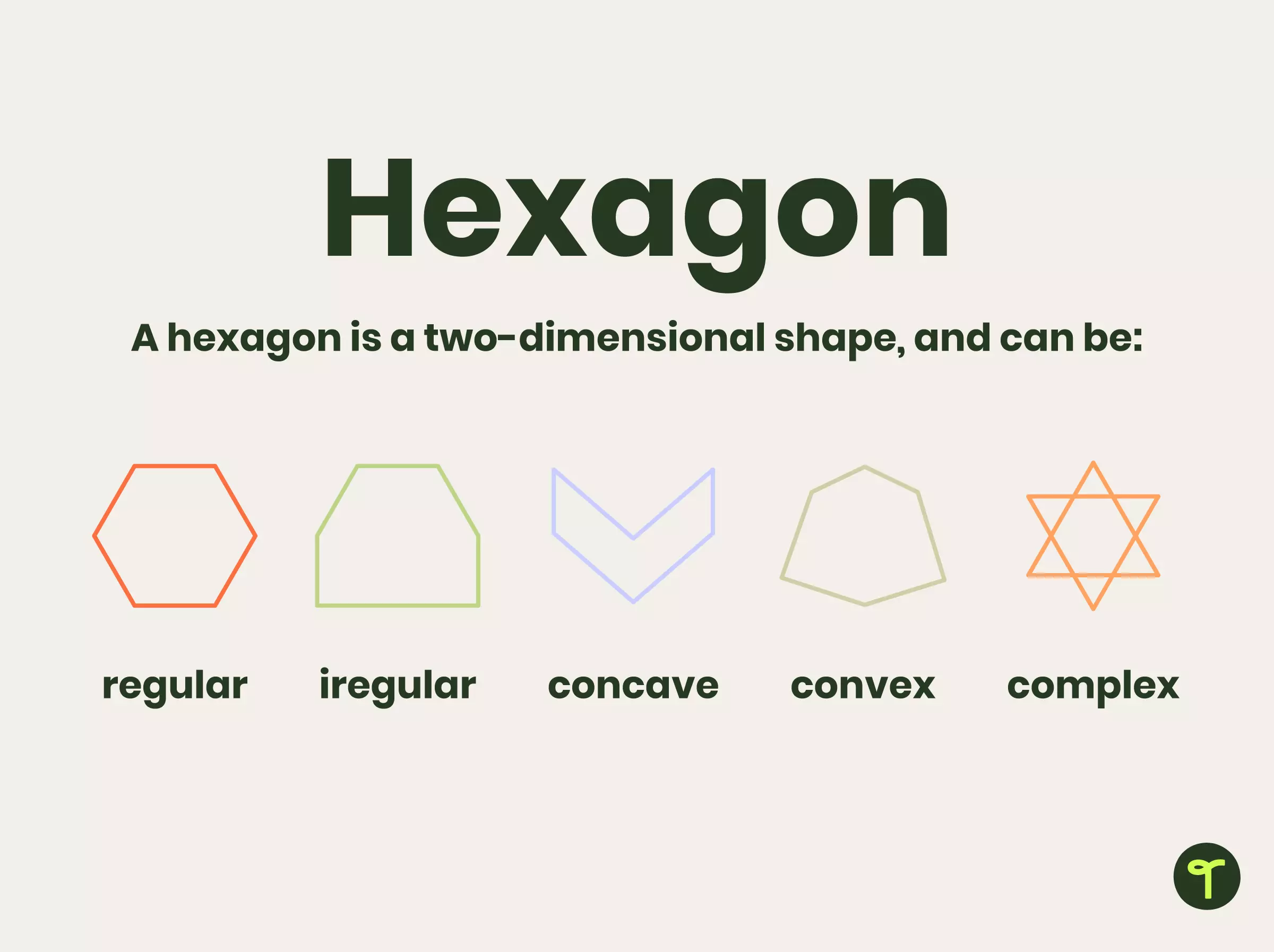Are you ready to dive into the world of geometry? If you're teaching math this school year, it's essential to start with a solid understanding of shape names and properties. And what better shape to begin with than the intriguing hexagon? In this comprehensive guide, we'll explore everything you need to know about hexagons, from their types to their real-life examples. So let's get started!
Unveiling the Hexagon's Secrets
A hexagon is a captivating two-dimensional shape with six sides and six angles. But it's more than just a polygon; it's a shape that holds tremendous strength. In construction and design, hexagons are highly regarded because they can be efficiently lined up without any wasted space. Their unique makeup sets them apart.
The Many Faces of Hexagons
Hexagons come in various types, each with its distinct characteristics. Your students might encounter:
Regular Hexagons
A regular hexagon is a closed-shape polygon with six equal sides and six equal angles. It possesses specific properties that differentiate it from other hexagons. To be classified as a regular hexagon, an object must:
- Be a plane figure
- Have six straight sides
- Enclose a space
- Have six interior angles measuring 120 degrees each
- Have all interior angles equal to a total sum of 720 degrees
 Caption: All About Hexagons — Printable Mini-Book
Caption: All About Hexagons — Printable Mini-Book
Irregular Hexagons
As the name suggests, an irregular hexagon is a 6-sided polygon that is not regular. Although the sides and angles may not be equal, it still retains the fundamental characteristics of hexagons. It remains a two-dimensional shape, with its sides composed of straight lines.
Concave Hexagons
You may have noticed concave hexagons on military jackets or police officer badges. These six-sided shapes feature deep indentations yet still qualify as polygons. What sets them apart is that they possess at least one internal angle greater than 180 degrees.

Caption: What Is a Hexagon? A Guide for Teachers
Convex and Complex Hexagons
Convex hexagons have no indentations and possess interior angles measuring less than 180 degrees. Complex hexagons, on the other hand, are irregular polygons with more than two edges intersecting at a single point.
Hexagons in the Real World
Hexagons are more common in our everyday lives than you might think. Here are a few examples that your students can discover:
- Honeycombs: Bees are masters of constructing uniform hexagonal honeycombs. These natural marvels are made up of many thousands of hexagonal lenses.
- Snowflakes: In wintry climates, take a closer look at snowflakes. The arrangement of water molecules during freezing often results in the formation of six-sided shapes. You can even create paper snowflakes in the classroom to explore hexagonal shapes further.
- Stop signs: The bright red stop sign is a prevalent hexagon in real life.
- Soccer ball panels: The light-colored panels on a soccer ball are, you guessed it, hexagons! They intertwine with pentagonal shapes, creating the iconic soccer ball design.
- Nuts and bolts: Take a peek into your tool chest or ask the custodial staff for any spare nuts and bolts. You'll often find hexagonal heads designed for easy gripping and turning.
The Fascinating Symmetry of Hexagons
Did you know that regular hexagons possess intriguing symmetrical properties? A regular hexagon boasts six rotational symmetries and six reflection symmetries, making it a captivating shape to explore. Its longest diagonals, connecting diametrically opposite vertices, are precisely twice the length of one side of the shape.
Diagonals: A Hexagon's Hidden Marvels
Diagonals are lines that connect opposite corners of a shape with straight sides. In regular hexagons, these diagonals form six equilateral triangles. To calculate the number of diagonals in a hexagon, we use the formula n(n-3)/2, where n represents the number of sides. For a hexagon, with n equal to 6, we find that there are a total of nine diagonals.
Hexagons: The Kings of Tessellation
Shapes that tessellate can be repeated across a surface without gaps or overlaps. Hexagons, with their straight sides that fit perfectly together, are excellent tessellating shapes. They are commonly used in tiling patterns and construction. Take a moment to look down at the school floor, and you may spot some hexagons just waiting to be discovered!
Engaging Hexagon Activities for the Classroom
To ignite your students' excitement about hexagons, try incorporating these fun activities into your lessons:
- Hexagon Art: Encourage your students to create their own hexagon-inspired art pieces using paper, paints, or any other artistic materials they enjoy.
- Hexagon Search: Challenge your students to find as many hexagons as they can within their environment. They can document their discoveries through drawings or photographs.
- Hexagon Puzzles: Provide your students with hexagon-shaped puzzle pieces and let them solve the puzzles in groups or individually.
Now that you're armed with a comprehensive understanding of hexagons, dive into the world of geometry with confidence! Explore the various types, discover their real-life examples, and unleash the magic of hexagons through engaging classroom activities. Get ready to captivate your students with the fascinating world of shapes!
















